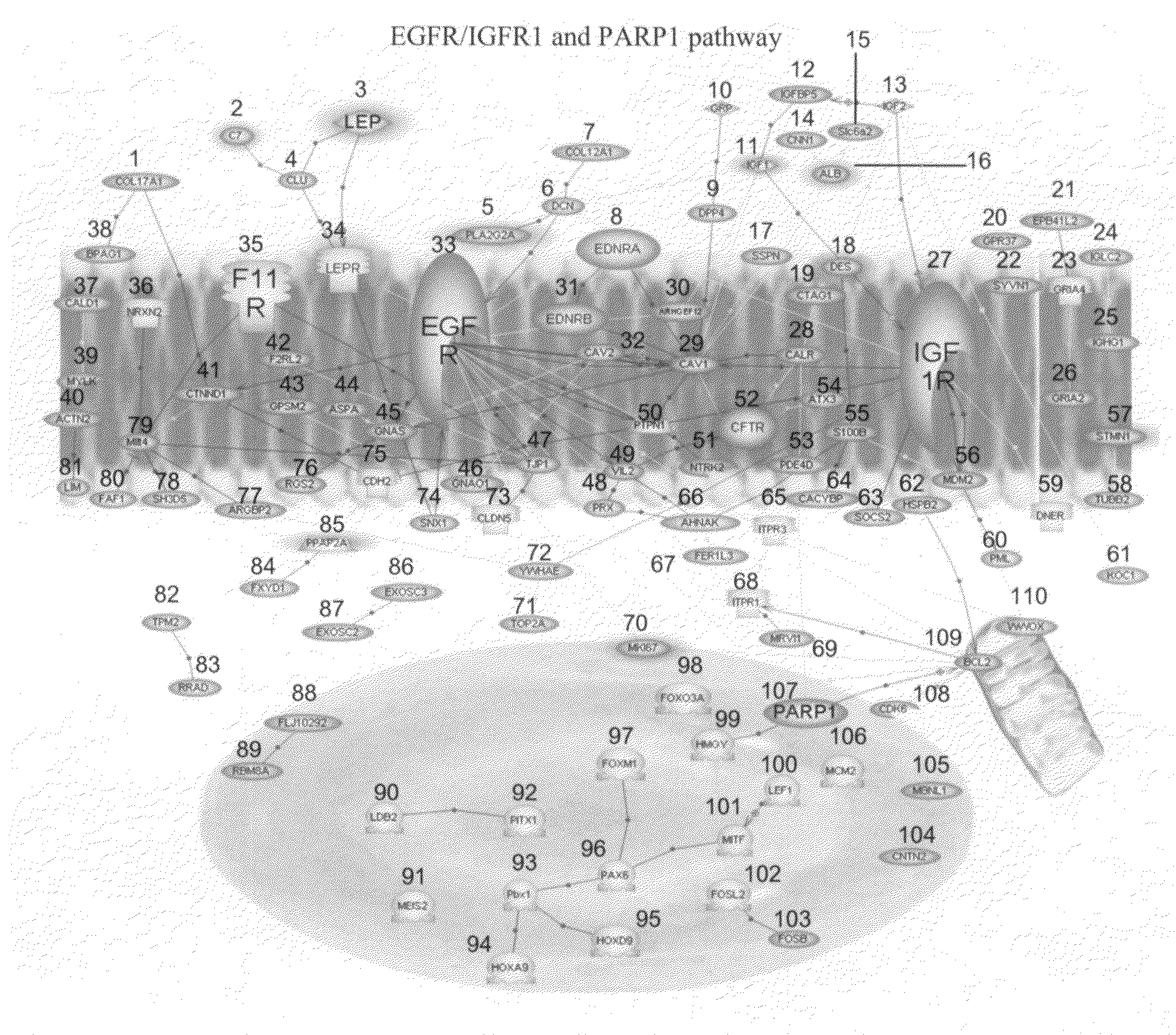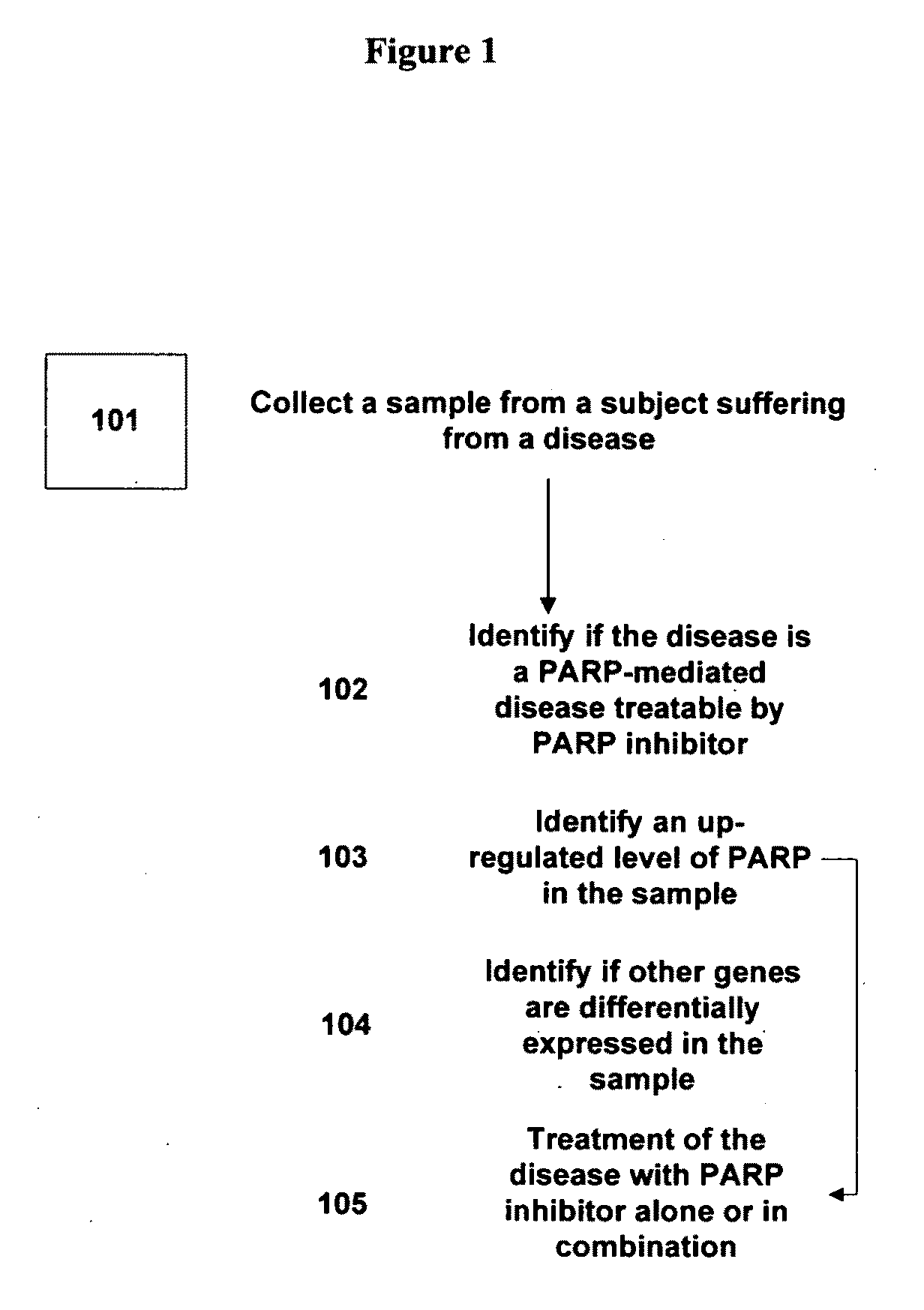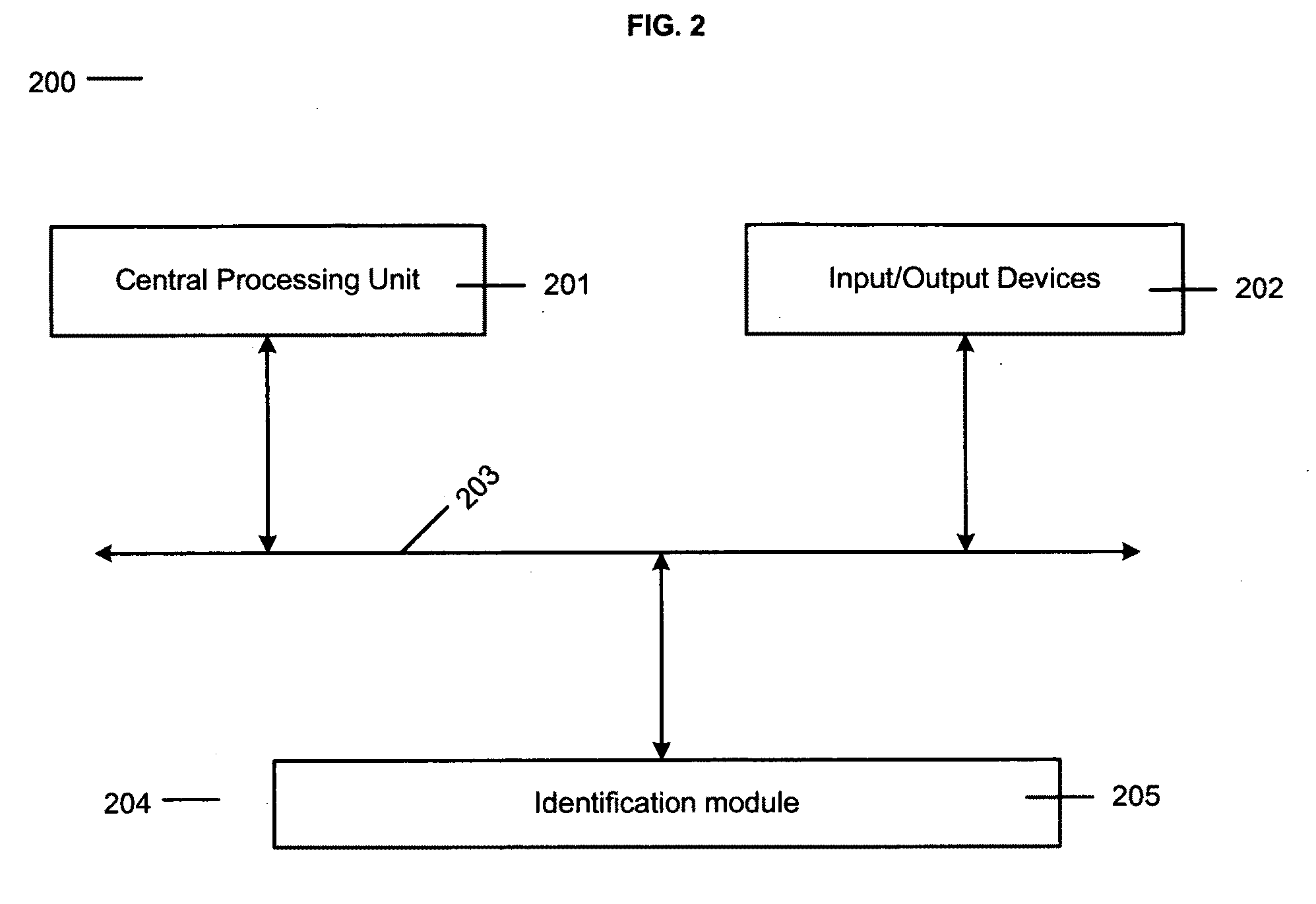Methods of diagnosing and treating parp-mediated diseases
a parp-mediated disease and disease technology, applied in the field of parp-mediated disease diagnosis and treatment, can solve the problems of cell dysfunction or necrosis, the incidence of resistance to these therapies, and the inability to detail the interactions of different known molecular pathways in the development of cancer, etc., to achieve the effect of preventing cancer, reducing the incidence of resistance to these therapies, and improving the incidence of cancer resistan
- Summary
- Abstract
- Description
- Claims
- Application Information
AI Technical Summary
Problems solved by technology
Method used
Image
Examples
example 1
[0353]GeneChip arrays have been widely used for monitoring mRNA expression in many areas of biomedical research. The high-density oligonucleotide array technology allows researchers to monitor tens of thousands of genes in a single hybridization experiment as they are expressed differently in tissues and cells. The expression profile of a mRNA molecule of a gene is obtained by the combined intensity information from probes in a probe set, which consists of 11-20 probe pairs of oligonucleotides of 25 bp in length, interrogating a different part of the sequence of a gene.
[0354]The gene expressions were assessed using the Affymetrix human genome genechips (45,000 gene transcripts covering 28,473 UniGene clusters). Approximately 5 μg total RNA from each sample were labeled using high yield transcript labeling kit and labeled RNAs were hybridized, washed, and scanned according to manufacturer's specifications (Affymetrix, Inc., Santa Clara, Calif.). Affymetrix Microarray Suite 5.0 softwa...
example 2
Up-Regulation of PARP1 mRNA in Normal and Tumor Tissues
Study Design and Materials and Methods
[0355]Tissue samples: Normal and carcinoma tissue samples were collected in the United States or United Kingdom. Specimens were harvested as part of a normal surgical procedure and flash frozen within 30 minutes of resection. Samples were shipped at −80° C. and stored in the vapor phase of liquid nitrogen at −170 to −196° C. until processed. Internal pathology review and confirmation were performed on samples subjected to analysis. H&E-stained glass slides generated from an adjacent portion of tissue were reviewed in conjunction with original diagnostic reports and samples were classified into diagnostic categories. A visual estimate of the percent of tissue involvement by tumor was recorded during slide review by the pathologist and indicates the fraction of malignant nucleated cells. Adjuvant studies such as ER / PR and Her-2 / neu expression studies were performed by methodologies including i...
example 3
Co-Expression of PARP1 mRNA and Other Targets in Normal and Carcinoma Tissues
[0369]The PARP1 gene is represented on the HG-U133A array by a single probe set with the identifier “208644_at”. Other genes, such as BRCA1, BRCA2, RAD51, MRE11, p53, PARP2 and MUCIN 16, are represented on the HG-U133A / B array set by respective informative probe sets. The list of probe sets mapped to each of the seven genes in the ovary sample analysis is listed in Table XXXIII.
TABLE XXXIIIComparison Genes and their Corresponding HG-U133A / B Probe Set IDsFragmentGene SymbolTitleName(s)BRCA1Breast cancer 1, early onset204531_s_atBRCA2Breast cancer 2, early onset214727_atMRE11AMRE11 meiotic recombination 11205395_s_at,homolog A (S. cerevisiae)242456_atMUC16Mucin 16, cell surface associated220196_atPARP2Poly (ADP-ribose) polymerase family,204752_x_at,member 2214086_s_at,215773_x_atRAD51RAD51 homolog (RecA homolog,205024_s_atE. coli) (S. cerevisiae)TP53Tumor protein p53 (Li-Fraumeni201746_at,syndrome)211300_s_at...
PUM
 Login to View More
Login to View More Abstract
Description
Claims
Application Information
 Login to View More
Login to View More - R&D
- Intellectual Property
- Life Sciences
- Materials
- Tech Scout
- Unparalleled Data Quality
- Higher Quality Content
- 60% Fewer Hallucinations
Browse by: Latest US Patents, China's latest patents, Technical Efficacy Thesaurus, Application Domain, Technology Topic, Popular Technical Reports.
© 2025 PatSnap. All rights reserved.Legal|Privacy policy|Modern Slavery Act Transparency Statement|Sitemap|About US| Contact US: help@patsnap.com



